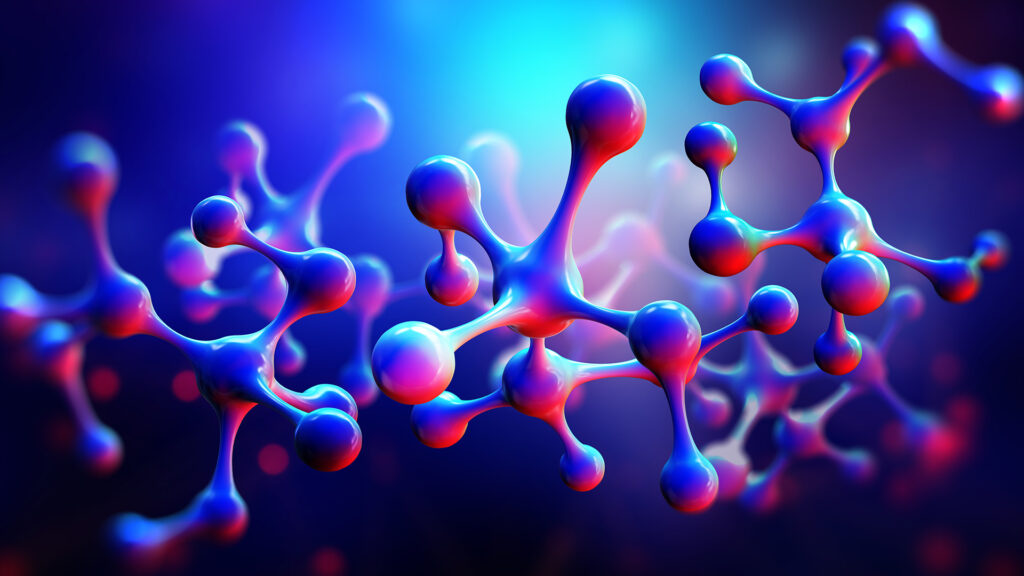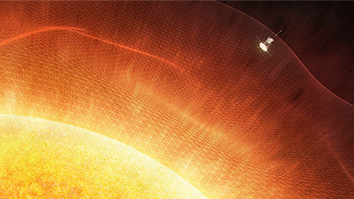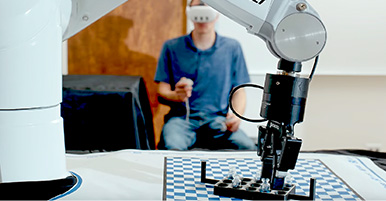
SRI aims to create a new electronic device class made of two or more semiconductors.
Over the past 75 years, semiconductors have changed the world. Silicon is the best known, but other semiconductors offer attractive electronic properties that silicon does not. For instance, silicon can’t emit light or operate at high frequencies. Researchers have long tried to integrate two or more disparate semiconductors, but different semiconductors don’t play well together. Nanofabrication experts at SRI and several leading universities aim to change that on behalf of the Defense Advanced Research Projects Agency (DARPA).
“From a nanofabrication perspective, the difficulty of the problem DARPA wants to solve falls somewhere between very hard and impossible, but we’re excited about this new approach,” said David Hill, a senior research scientist at SRI and the organization’s principal investigator for DARPA’s M-STUDIO, or Material Synthesis Technologies for Universal and Diverse Integration Opportunities. “The goal is to produce a single chip made of two thin layers of mismatched semiconductor materials.”
“Whenever you try to layer different semiconductors, the crystalline structures don’t match where the materials meet. These mismatches — considered defects — degrade the performance,” Hill added.
Rearranging atoms to form something new
Hill and his team from SRI will collaborate with researchers at Princeton Plasma Physics Lab; the University of California, Santa Barbara; and Columbia University. The team will use a new technique, known as a “hyperthermal beam,” developed in part at the Princeton Plasma Physics Lab, to dislodge and rearrange atoms in the upper layer of a two-layer double-semiconductor device into a perfect crystalline structure free of defects.
“This method is quite different than other approaches; we’re kind of violating certain rules of nanofabrication here,” Hill explained. “Our approach doesn’t require high heat the way conventional approaches do.”
“From a nanofabrication perspective, the difficulty of the problem DARPA wants to solve falls somewhere between very hard and impossible, but we’re excited about this new approach.” — David Hill
To visualize the process, imagine a thin layer of charcoal-gray silicon with a shapeless blob of a second semiconductor sitting on top. The team will use the hyperthermal beam to generate a stream of neutral atoms that can rearrange the atoms in the blob into a perfect crystal. The arrangement of the atoms in the interfacial layer is critical to the combined function of the two semiconductors and the structure of the layers that are then grown atop.
The result is a single device made of two semiconductors that retain their individual functions. The joined semiconductors collaborate as a circuit to achieve dual functionality that wasn’t possible before.
“The hyperthermal beam provides energy, momentum, and time for the amorphous material to rearrange as it settles into possible arrangements,” he said. “Eventually, the blob naturally settles into this perfect crystal.”
Changing how we build devices could lead to potential applications
The DARPA work is a two-phased project. In the first phase, the researchers will develop a proof-of-concept for the hyperthermal beam approach, working to shape a 10-nanometer-thick crystal of a single semiconductor on a mismatched substrate. In the second phase, a second semiconductor will be added and shaped into a new crystal atop the first to create a true multi-material structure.
If this new approach is successful, it could completely change the way we build tiny devices, especially those with multiple materials, leading to groundbreaking innovations. For instance, we could create advanced chips that use silicon to guide light along with on-chip lasers that produce light, all in one device. Another exciting application could be new radar systems that combine the digital precision of silicon with the high power and frequency control of materials like gallium nitride or gallium arsenide. This would make these devices more efficient, powerful, and versatile than ever before.
“Currently, individual chips accomplish dual functions only when you couple them together into a system. This novel process would combine functionality on a single chip,” Hill said, teasing potential future applications. “It could represent an entirely new method of nanofabrication.”
Distribution Statement “A” (Approved for Public Release, Distribution Unlimited)



